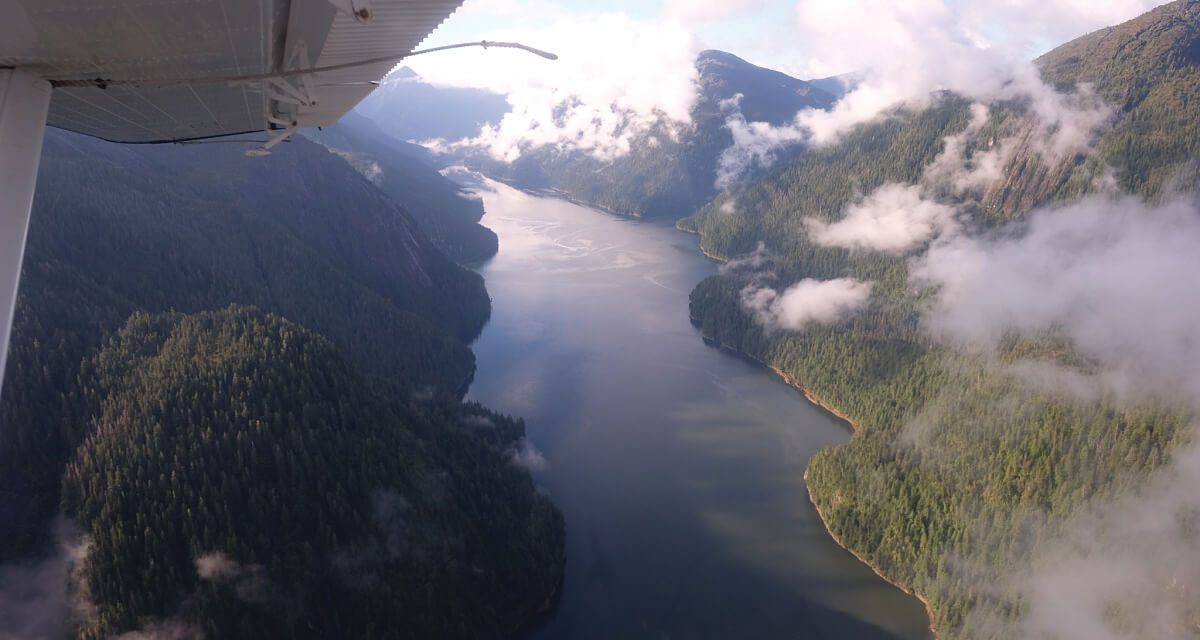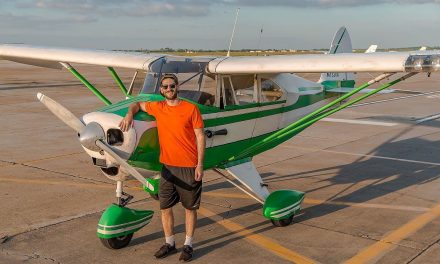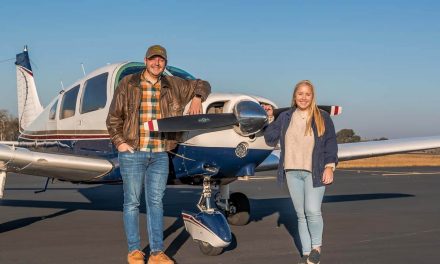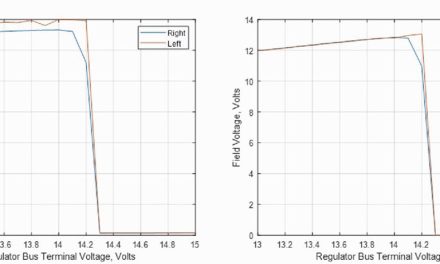By Jim Gibertoni
I’ve been flying in Alaska since the mid-1970s. You can pick me out at the airport pretty easy — gray hair, hearing aids, eyeglasses, portly, and kinda slow. The question I get from pilots outside the state is, “What’s it like to fly in Alaska?” It’s the holy grail of aviation second to none! It’s the biggest, shiniest nugget on any aviation bucket list!
Most curious pilots arrive by airliner; some by flying their own plane — any very airworthy, well-maintained aircraft will do. Sometimes I load a couple in my Cessna 206 and take them for a ride. Within minutes, they are blown away by what they see. In every direction they “run out of eyeball.” To understand this, you need to Google that picture of Alaska superimposed over the lower 48 — more like two-thirds of the lower 48.
Navigating in Alaska
Flying in Alaska is totally different today than in the ’70s. Back then we flew from VOR/ADF to VOR/ADF ground base stations. Few of us had LORAN navigation (which came with its own issues and anomalies). The VOR and ADF were very reliable back then.
Then came GPS systems. Life got better and we no longer traveled the airways only, so to speak. We learned all about GPS direct, no more triangle route to get somewhere.
Then, once upon a time the fairy godmothers of aviation promised us a new system. Words like Capstone, Next Gen, WAAS, and ADS-B appeared.
We were promised a wedding cake but got a Twinkie instead. Do not get sucked into the idea that we have the same infrastructure as the lower 48 — nothing could be further from the truth.
Before you travel to Alaska, you must understand the disparity between the government-supplied navigation aid and aviation communication systems in the lower 48 versus Alaska. It’s apples and oranges. One size doesn’t fit all.
ADFs are few and far between, when they work. I have one, and it will leave my plane’s panel on the 10th of never! The FAA is on a mission to get rid of them. Some VORs are available, but it is not unusual for some of them to be inoperative for numerous reasons. There seems to be no sense of urgency to immediately repair them.
I use an iPad/ForeFlight with a Stratus 3. This is clearly a much-desired improvement over 40 years ago. I recommend it. But the closest cell towers could be hundreds of miles away. Thirty miles out of Fairbanks International Airport (PAFA), you might as well shut your cell off; it will be hours before you’re in range of another cellphone tower, which probably will not work for you on your out-of-state cell. Welcome to Alaska’s communication system.
ADS-B to me has been a disappointment in Alaska to say the least. I have a uAvionix tailBeacon unit and I like it. But Alaska never received enough ADS-B ground base stations.
I’ve been notified that the government has acknowledged this deficiency and promised another 11 (of the 36 needed) new ADS-B ground stations soon! That word raises the hair on the back of my neck.
The number of GA aircraft with ADS-B installed in Alaska is about 17% (depending on who’s doing the counting). But do not run with that number — here’s the catch!
- Some have ADS-B In only.
- Some have ADS-B Out only.
- Some have ADS-B In and Out.
I have ADS-B In and Out on my 206. I fly just shy of 200 hours a year. My experience is the ADS-B traffic function alerts me to some of the traffic some of the time. Not to be confused with all the traffic all the time.
Mid-airs are an issue up here. Sadly, in 2019 32 people were killed in GA in Alaska (both 135 and Part 91). Alaska’s population is about 750,000 so compare those losses to other states. Most of our airstrips are uncontrolled with chaotic ancestral worship customs of airport decorum sanctioned by our local government and the gods of Alaskan aviation.
ADS-B is not a silver bullet solution, far from it; however, it’s better than nothing and better than 30 years ago. The FAR/AIM calls for five calls to CTAF for landing and four calls taking over. I find that very good advice in Alaska given 95% of our airports are uncontrolled and ruled by tribal local knowledge.
Alaska has about 240 villages/communities. Most have an airstrip (there are about 282 public strips in Alaska). Most of those are not paved. Most have an instrument approach of some questionable value.
More than 85% of those approaches are not allowed at night. Come June 20 you have 20 hours of daylight, so it’s not such a big problem. Come December 20 you have 4 hours of light. Big problem. Flying in northern Alaska in deep winter months is a big girl’s or boy’s game, but that’s the best time to view the northern lights. Consider hiring a local 135 for this kind of flying; there are about three dozen Navajos you can hire up here.
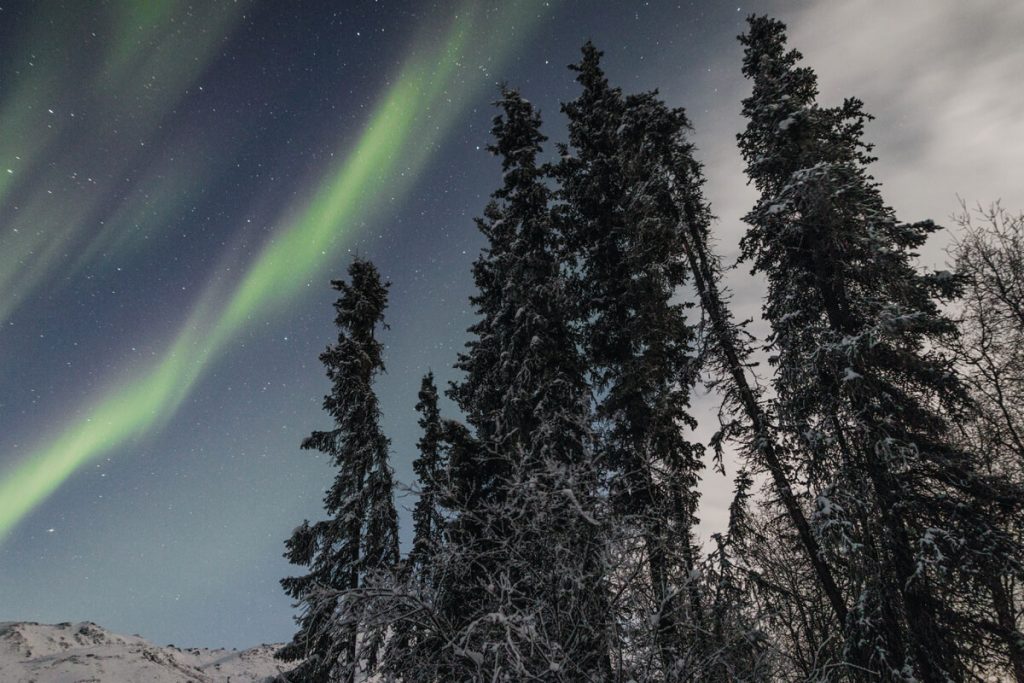
Generally speaking, there are no services whatsoever at all those public airstrips. I have long-range tanks: 42 gallons per side, 84 gallons total. That’s about five hours normally. I fly lean of peak often, which increases range to 6.5 hours total. Nowadays, I’ve got a four-hour bladder, so the wing tip tanks are not needed. Be aware that you will run into mean headwinds, plan for it.
Fuel can be anywhere between $5 to $12 per gallon when available. Suck it up buttercup, pay it and move on enjoying the time of your life.
Pay attention to the airport supplement — it’s very important. Those strips sometimes have NOTAMs, but it is rare to have anyone living there capable of creating a NOTAM. Do not expect airports to have current NOTAMs for every anomaly. It’s not going to happen, so you should probably fly over and inspect before landing.
Weather
The weather reporting system in Alaska for the most part is weather station poor. We need about 48 more ASOS, AWOS, or reporting stations. Again, the government says soon (dog gone it I hate that word). The powers that be acknowledge this problem but fall far short of doing something about it. I have never found a weather report in Alaska to be totally correct. I have never found a weather report in Alaska to be totally incorrect either. I approach all weather forecasts up here with a large dose of skepticism — 60-70% correct seems to be the norm. However, with hundreds of miles between villages, sometimes without PIREPs you can easily be trapped in very bad weather. I still get caught, make no mistake about it. All things considered, VFR into IMC, icing, and CFIT are very easy to get caught up in in Alaska all 12 months of the year!
I’ve been, and still am, a Civil Air Patrol search and rescue mission pilot for 23 years. Here’s the big picture from a SAR mission pilot perspective. Folks go out to the wilds of Alaska in boats, hiking, ATV, aircraft, etc. at the beginning of good weather. They try coming back to civilization at the beginning of bad weather, and then get into a predicament! That’s when the SAR people are called upon to find them — at the beginning of bad weather.
Weather in Alaska is very sinister. No pilot can overcome it, you have to bypass it. Do not walk away from a FSS briefing in Alaska thinking “I can take this info to the bank.”
Those briefers are just that: Everything they tell you is based on a poor infrastructure of weather gathering. Garbage in, garbage out. They’re great people trying to do their best based on garbage info. We need another 42 AWOS or ASOS, period. I get FSS briefings for all sorites over 50 nm out. The real good, up-to-date info is created by a pilot in the PIREPs. Ask for PIREPs every time! And don’t be a cheap skate. Give your PIREPs every hour or change in condition to FSS. Keep in mind you’re lucky if you can raise FSS in Alaska 60% of the time! They simply do not have enough RCO.
Preparation
Because of Alaska’s lack of weather reporting and poor infrastructure as mentioned above, extra effort needs to go into the preflight stage. Do not fly up here without doing due diligence to all phases of Alaskan flight. How about this, help me (the SAR pilot) help you be found.
- File a flight plan.
- If you have a SPOT, push it every 30 minutes or get and use Spidertracks. Also log those devices in the remarks section of your flight plan to FSS.
- Check in with a local CFI before you fly and let them critique your plan. Do not rely on information you learned from someone at home who drinks the same brand of beer that you do. Leave that at home and do your own homework.
- Do not fly your plane to an area that exceeds your plane’s or your performance capabilities. I find my POH to be my bible for my plane. I have almost 4,000 hours in just my current plane and I still refer back to the POH.
- For once in your life, leave the stupid schedule home. Get-there-itis never works anywhere, especially Alaska. Pull that crap up here and I guarantee you will be “late John the pilot!”
Plan on being grounded for days. I call it “float” in my schedule.
I suggest you fly straight up to Fairbanks. After crossing the border from Canada, you will have to land at Northway Airport (PAOR) — which has a big, paved runway — for customs. There’s no fuel or services there, but it’s 35 miles more to Tok Junction Airport (PFTO) with its paved, narrow runway, which has food, hotel, and fuel adjacent to the airport. Fill up!
You need to spend hours looking at the Alaskan sectional and making notes before you leave home. As soon as you head toward TOK you can see no less than 25 different military operations areas or other restricted areas on your course.
Eielson Air Force Base is home to 52 F-35s, 12 KC-135 aerial refuelers, and 12 F-16s. Not to mention Elmendorf AFB in Anchorage, which has 32 F-22 Raptors and 24 F-15s plus jumbo military aircraft. Oh yeah, I almost forgot Ladd Field, which is 8 miles from PAFA. It’s known as Fort Wainwright and is home to 25 Blackhawks, 20 Chinooks, 24 Apaches, and a Gray Eagle unmanned aircraft.
Eielson is home to Red Flag (USAF equivalent to Navy Top Gun). Plus maybe 50 other NATO aircraft from all over the world. Don’t worry, at the speed they’re going you’ll never see them coming!
You will see this note on the sectional: “Special use airspace SUAIS 125.3/126.3.” Use it. Call before entering MOAs. Do not even go near the restricted area when it’s hot! How do you know when it’s hot? Contact them by phone or comm. The Air Force made it easy.
Look in the sectional for this note again before you get there. Again — preflight! FSS can give you a phone number and brief you too!
On to Fairbanks (PAFA). At PAFA they have a really nice campground spots just for little guys with props. It comes with tent areas, pavilion, camp sites, fire pits with firewood, picnic tables, outhouses, showers, bicycles for rent, a Fred Meyer grocery store 1/2 mile away, etc. Use PAFA as your hub. On good days you can fly any direction you want. On bad days, you can explore Fairbanks. There’s plenty to see!

